
The Pinaceae, or pine family, are conifer trees or shrubs, including many of the well-known conifers of commercial importance such as cedars, firs, hemlocks, piñons, larches, pines and spruces. The family is included in the order Pinales, formerly known as Coniferales. Pinaceae have distinctive cones with woody scales bearing typically two ovules, and are supported as monophyletic by both morphological trait and genetic analysis. They are the largest extant conifer family in species diversity, with between 220 and 250 species in 11 genera, and the second-largest in geographical range, found in most of the Northern Hemisphere, with the majority of the species in temperate climates, but ranging from subarctic to tropical. The family often forms the dominant component of boreal, coastal, and montane forests. One species, Pinus merkusii, grows just south of the equator in Southeast Asia. Major centres of diversity are found in the mountains of southwest China, Mexico, central Japan, and California.

Picea abies, the Norway spruce or European spruce, is a species of spruce native to Northern, Central and Eastern Europe.
Creeping pine may refer to several conifer species:

The Blastobasidae are a family of moths in the superfamily Gelechioidea. Its species can be found almost anywhere in the world, though in some places they are not native but introduced by humans. In some arrangements, these moths are included in the case-bearer family (Coleophoridae) as subfamily Blastobasinae. The Symmocidae are sometimes included in the Blastobasidae as subfamily or tribe.

Holcocera is a gelechoid moth genus of the family Blastobasidae. There are about 70 described species.
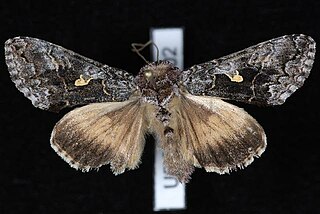
Syngrapha celsa, the plain silver Y or western conifer looper, is a moth of the family Noctuidae. The species was first described by Henry Edwards in 1881. It is found in North America from British Columbia to California, Idaho, Nevada, Arizona and New Mexico.

The Zeiraphera griseana, the larch tortrix, is a moth of the family Tortricidae.

Xenotemna is a genus of moths belonging to the family Tortricidae. It contains only one species, Xenotemna pallorana, which is found in North America, where it has been recorded from Alaska to California, east to Florida and north to Quebec and Ontario.

Clavigesta sylvestrana is a moth of the family Tortricidae. It is found in the western and north-western Baltic region, England, France, the Netherlands, Belgium, Germany and Madeira.
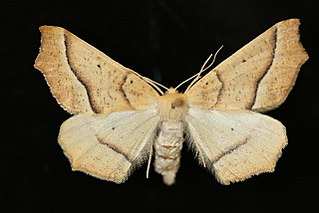
Tetracis pallulata is a moth of the family Geometridae first described by George Duryea Hulst in 1887. It is found in western North America from southern California north to British Columbia, east to Idaho and western Montana from near sea level to 2,200 meters.
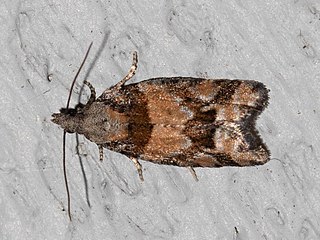
Epinotia radicana, the red-striped needleworm moth, is a species of moth of the family Tortricidae. It is found in western Canada, including British Columbia and Alberta.
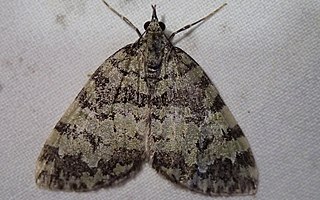
Hydriomena speciosata is a moth of the family Geometridae. It is found from coastal British Columbia south to California. The habitat consists of wet conifer forests.
Holcocera extensa is a moth in the family Blastobasidae. It is found in South Africa.
Holcocera crassicornella is a moth in the family Blastobasidae. It is found in southern Florida.
Holcocera guilandinae is a moth in the family Blastobasidae. It is found in the United States in southern Florida and on Bermuda.
Holcocera panurgella is a moth in the family Blastobasidae. It is found in Arizona, United States.
Holcocera villella is a moth in the family Blastobasidae. It is found in the United States, including Maryland, Oregon, Maine and California.
Holcocera iceryaeella is a moth in the family Blastobasidae. It is found in California, United States.
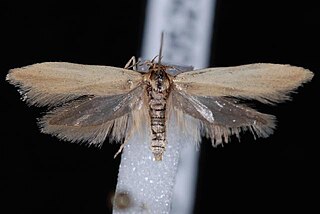
Holcocera immaculella is a moth in the family Blastobasidae. It is found in North America and Canada, including Ontario, Quebec, Alabama, Arizona, British Columbia, Florida, Maine, Manitoba, Massachusetts, Minnesota, New Brunswick, New York and Tennessee.
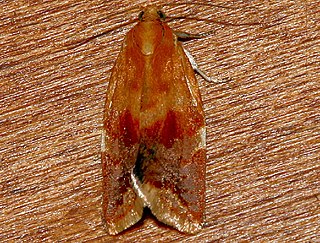
Clepsis persicana, the white triangle tortrix or the green needleworm, is a species of moth of the family Tortricidae. It is found in North America, where it has been recorded from Alaska and British Columbia to Newfoundland and south to Virginia and west to California. The habitat consists of coniferous and mixed coniferous forests.












